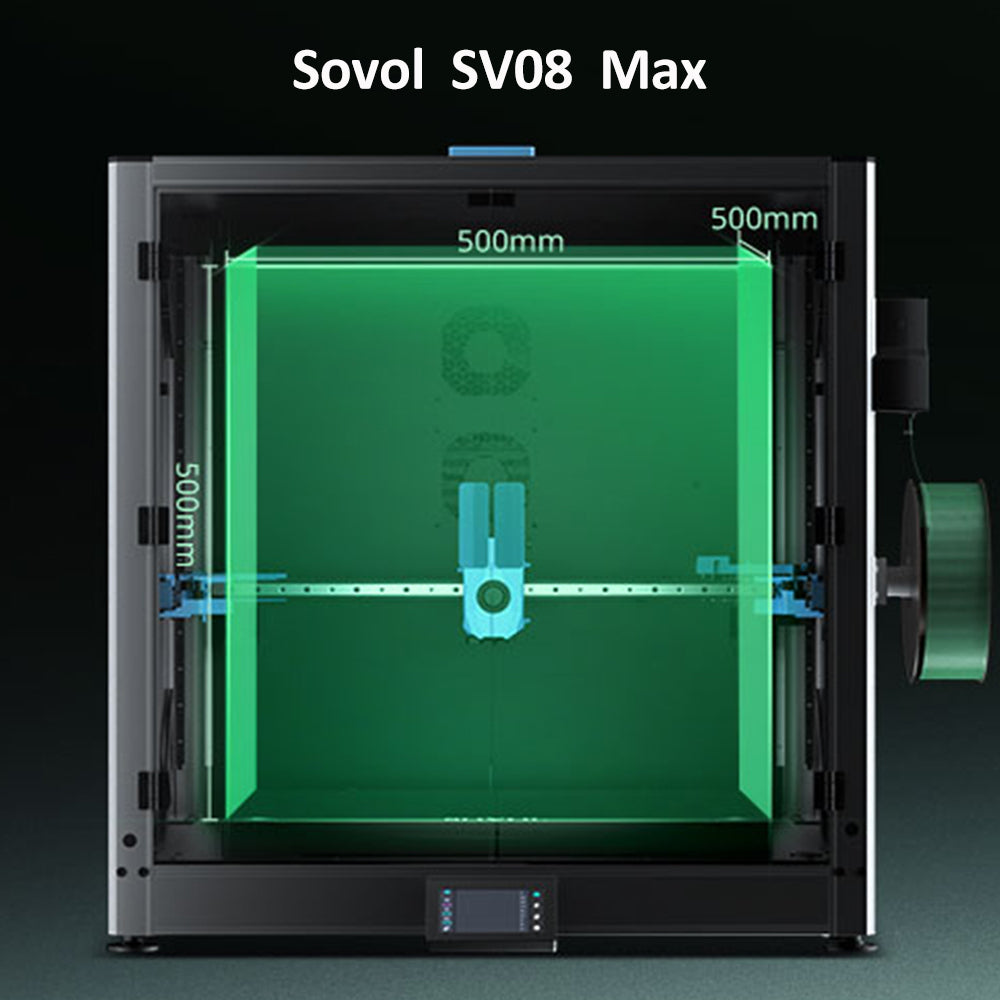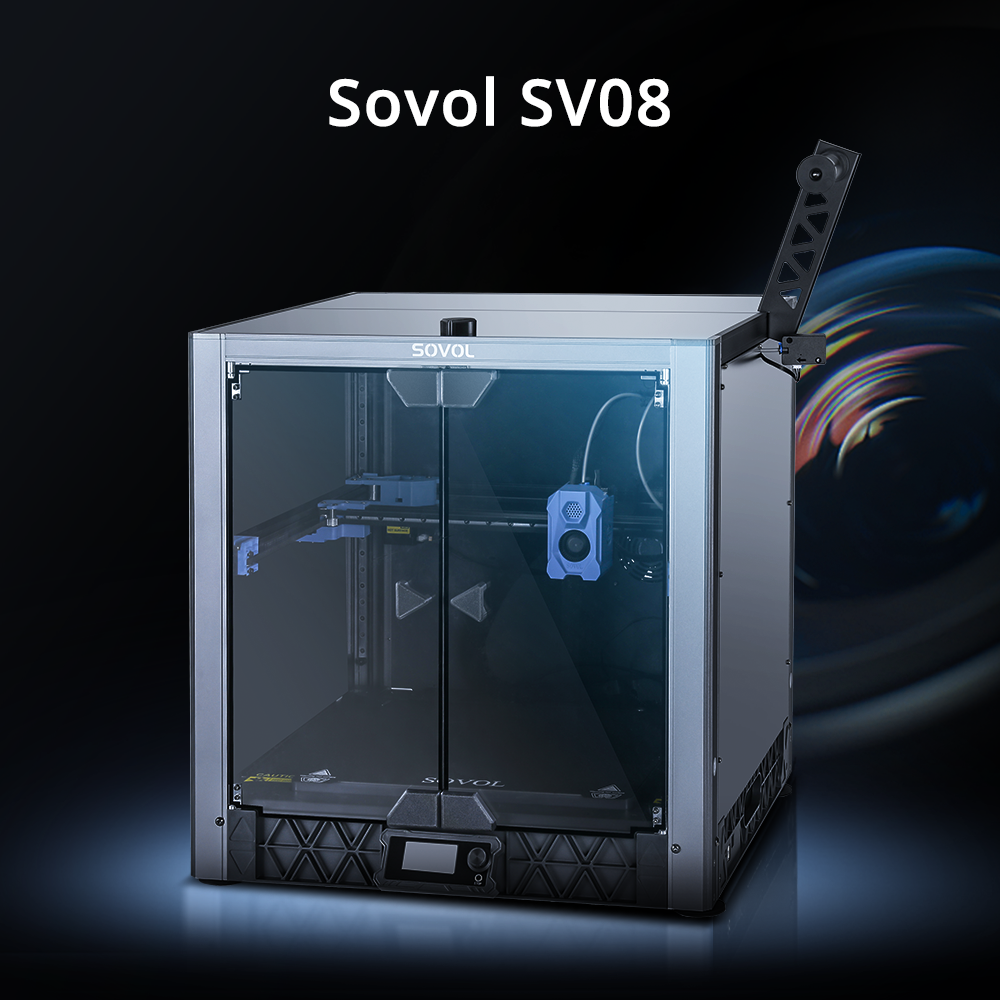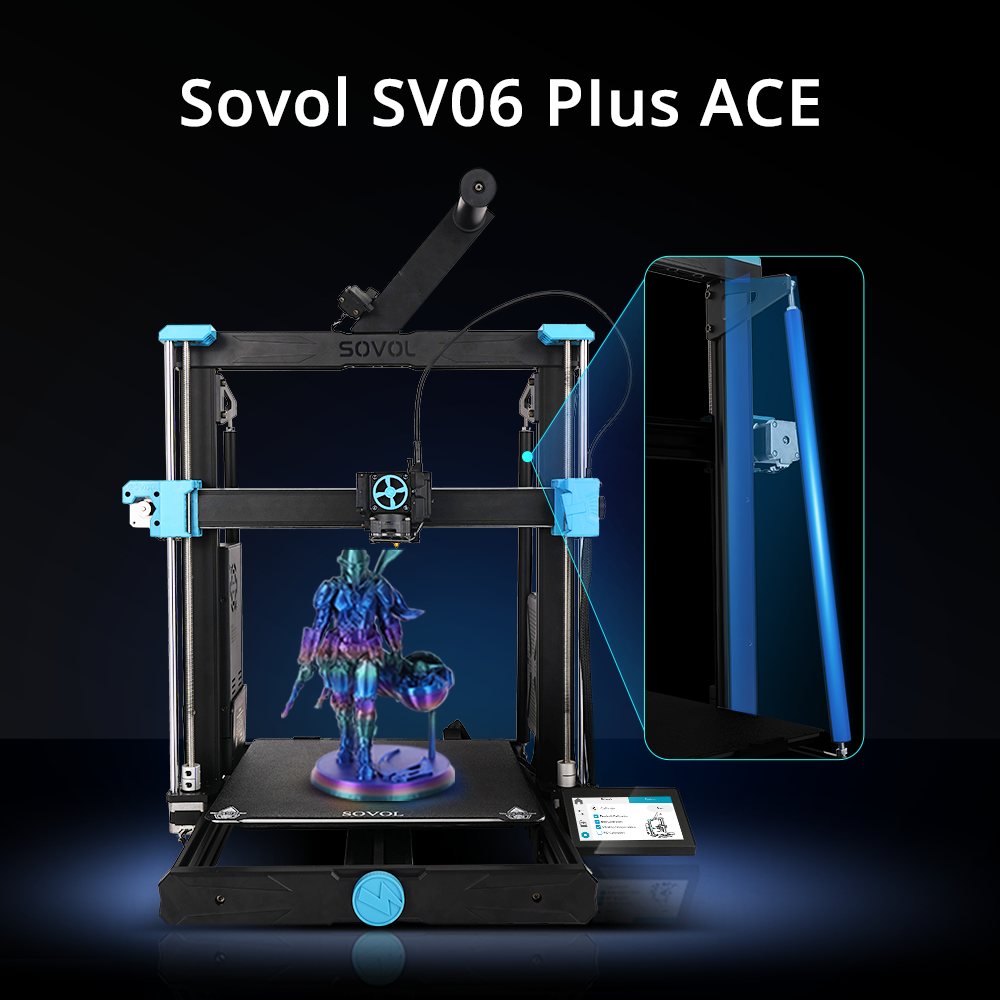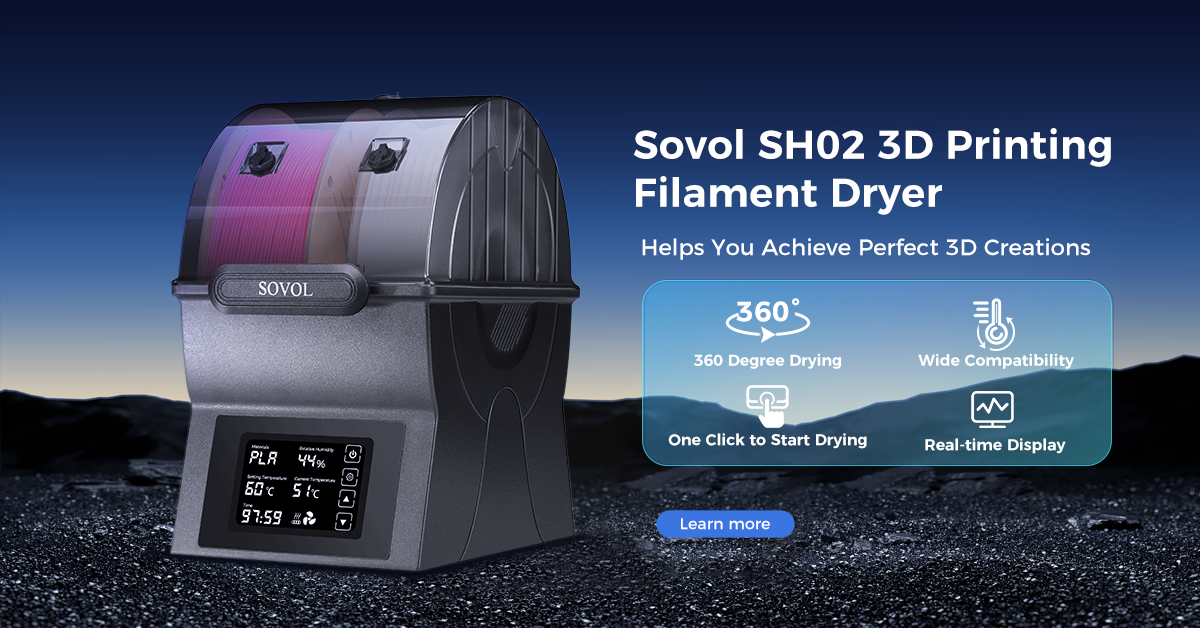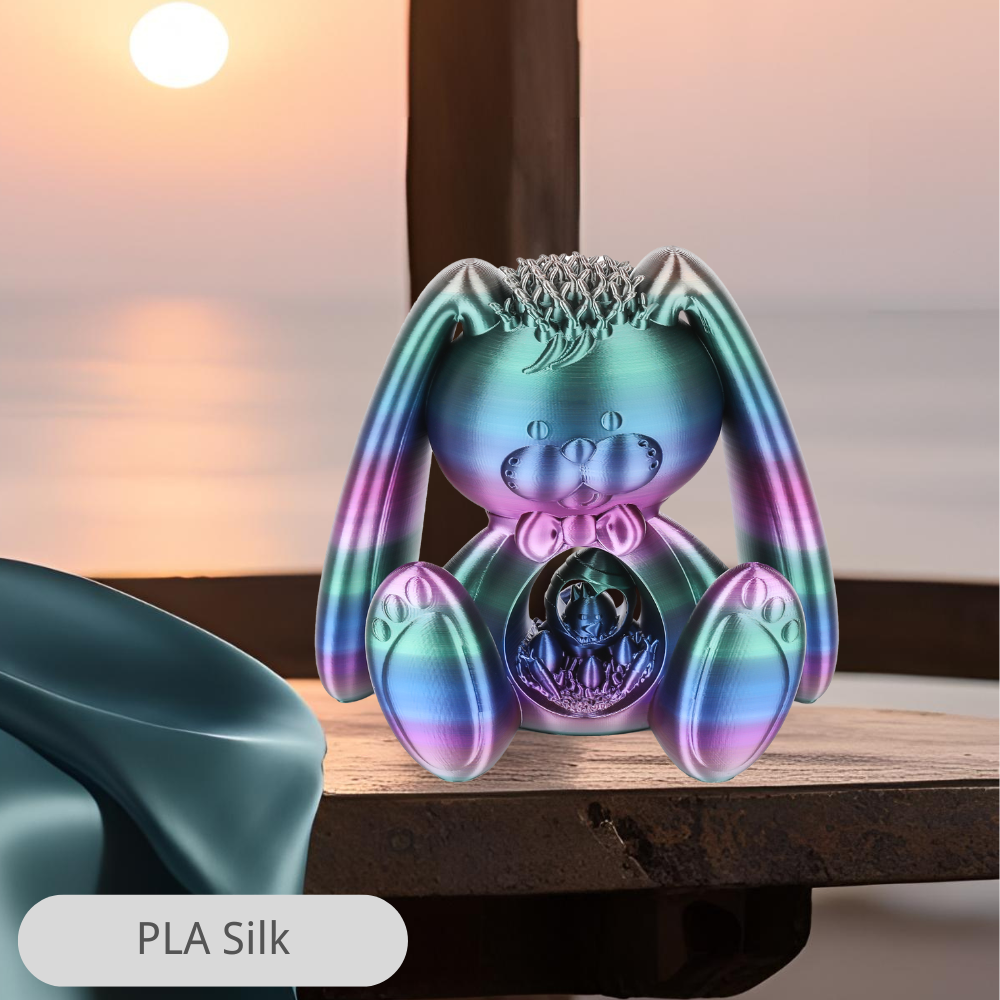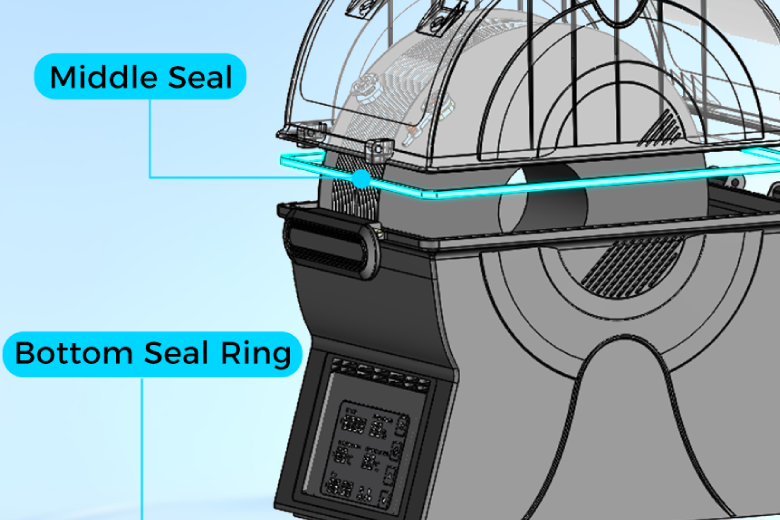Moisture can ruin your 3D prints, even if you’re using the best filament and printer. When filament gets wet, it can cause uneven layers, popping sounds, and a rough finish. Studies show that failed prints can increase from 40% to 60% with wet filament. Using a high quality 3D printer dryer box keeps your filament dry, helping you achieve better, smoother, and more perfect 3D prints every time.
Key Takeaways
- Moisture in filament makes prints have bubbles and weak spots. It can also make the surface rough and mess up your 3D prints.
- A good 3D printer dryer box keeps filament dry. It blocks wet air and uses heat and fans to get rid of moisture.
- Dry filament goes into the printer easily. This gives you stronger, cleaner, and better prints with fewer problems.
- Special dryer boxes let you control drying better and work faster than homemade or simple storage. They protect your filament more.
- Always dry your filament before you print. Keep it in a sealed dryer box to save time and money and make your prints look better.
Filament Moisture Problems

Print Quality Issues
You want your 3D prints to look nice and strong. But moisture can mess that up. When filament gets wet, it changes how your printer works. PLA, Nylon, PETG, and PVA all have this problem. Nylon and PVA are even more sensitive to water. Just a few days in the air can change them. PLA can soak up water fast. This makes rough prints and popping sounds when printing. You might see uneven layers or colors that look off. Wet filament makes layers stick badly. Your prints can break or feel weak. If you hear crackling or see steam, your filament is wet. That is why drying filament is so important for 3D printing.
Moisture makes filament soft and hard to feed. You might see lines that are not even, rough spots, or weak parts. Storing and drying filament keeps it working well. If you want the best prints, keep your filament dry all the time.
Common Defects
Moisture in filament causes many problems. Here are some you might notice:
|
Defect |
Cause/Explanation |
|---|---|
|
Water in filament turns to steam and makes bubbles |
|
|
Wet filament makes rough or bumpy surfaces |
|
|
Poor layer adhesion |
Water stops layers from sticking together well |
|
Steam makes too much filament come out and form strings |
|
|
Material lumps (knots) |
Too much filament comes out and makes clumps |
You might also see clogged nozzles, bubbles, or thin threads on your prints. These happen because water in the filament turns to steam when printing. The steam makes the filament puff up and come out uneven. Moisture clearly hurts your print’s look and strength. Drying and storing filament right helps stop these problems. If you want perfect prints, you must keep your filament dry and safe from moisture.
High Quality 3D Printer Dryer Box Benefits
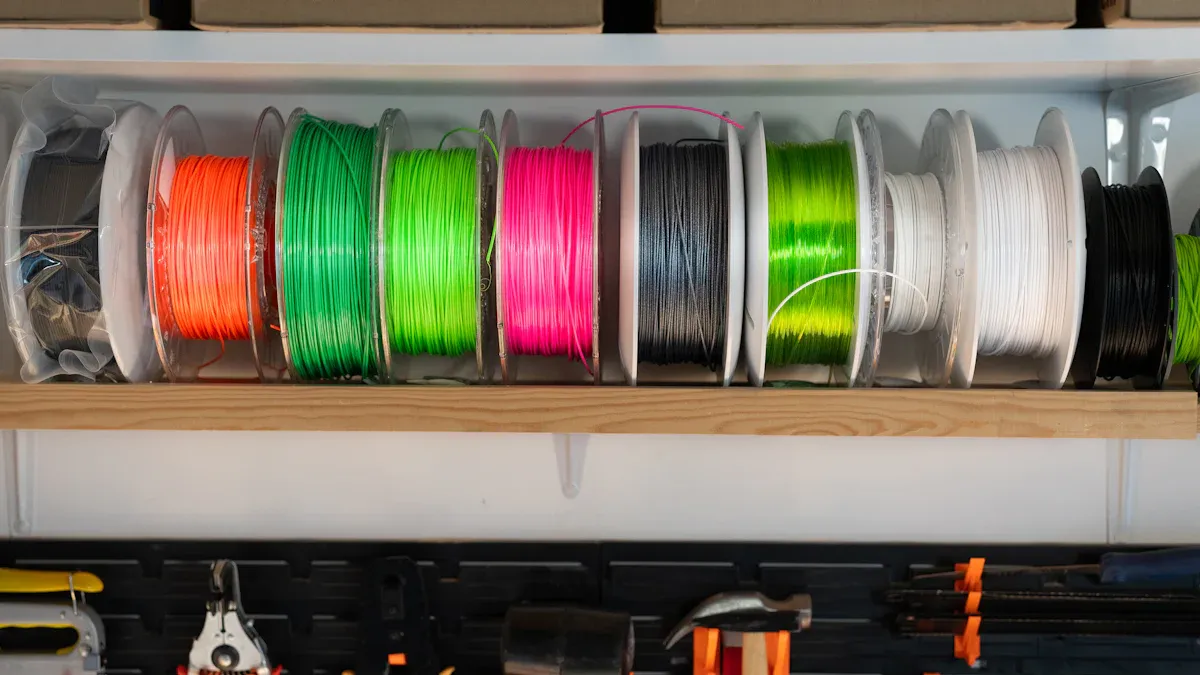
Prevents Moisture Absorption
You want your filament to stay dry and ready for printing. A high quality 3D printer dryer box gives you the best protection against moisture. The box uses an airtight seal to block out humidity. Inside, you find silica gel that absorbs any water in the air. The silica gel sits away from the filament, so it never gets tangled or stuck. You can check the color of the silica gel to know when it needs to be changed or dried again. Always keep the lid closed tight. When you switch filament, open the box for as little time as possible. This keeps your filament dry and safe.
Modern dryer boxes, like the SUNLU S4, use even more advanced features. They heat the air inside and use fans to move the warm air around. The box checks the humidity and turns on drying when needed. When the air gets dry enough, it stops heating to save energy and protect your filament. This smart system keeps your filament dry all the time, even if you print in a damp garage or basement.
Tip: Always store your filament in a high quality 3D printer dryer box, even when you are not printing. This stops moisture from sneaking in and ruining your next print.
Supports Better Prints
You want better prints every time you use your 3D printer. Proper filament drying is the key. When you use a high quality 3D printer dryer box, you stop moisture from getting into your filament. Dry filament feeds smoothly into your printer. You avoid stringing, popping, and rough layers. Your prints come out clean, strong, and shiny.
PLA, PETG, and TPU filaments all absorb water from the air. If you use untreated filament, water gets trapped inside. When you print, the water turns to steam. This makes bubbles and foam at the nozzle. Your prints look uneven and weak. A high quality 3D printer dryer box uses fans and gentle heat to keep your filament dry during storage and printing. You get a steady flow of filament, which means higher print quality and fewer problems.
You also save money and time. Drying your filament means you throw away fewer failed prints. You do not waste expensive filament on bad prints. You spend less time fixing problems and more time making things you love. Some dryer boxes can hold and dry several spools at once. This helps you if you print a lot or use many colors and materials.
Here is a quick look at how different drying methods compare:
|
Drying Method |
Description |
Advantages |
Disadvantages |
|---|---|---|---|
|
Filament Container |
Simple box for one spool, no active drying |
Cheap, easy to use |
No active drying, only one spool |
|
Dryer Box |
Airtight, uses heat and fans, dries and stores filament |
Keeps filament dry, supports multiple spools, best print quality |
Costs more, but worth it |
A high quality 3d printer dryer box gives you the power to control filament drying. You get better prints, less waste, and a smoother workflow. You can print with confidence, knowing your filament is always ready.
Dedicated Dryer vs. Other Solutions
Why Choose a Dedicated Dryer
You want your 3D prints to turn out great. A dedicated dryer helps you do that. This device lets you control the temperature very well. It uses special parts to pull water out of the air. The air inside gets very dry, almost like a desert. This keeps your filament in top shape. Food dehydrators do not work as fast or as well. A dedicated dryer is made for thermoplastics. You can pick the right heat for each filament type. It is also safer and better for storage. Food dehydrators are made for food, not filament, so they cannot do these things.
|
Drying Method |
Advantages |
Disadvantages |
|---|---|---|
|
Oven |
Fast and cheap; easy to use |
Needs close watching; can overheat and release bad fumes; not safe for filament |
|
Food Dehydrator |
Low cost; better than ovens for steady heat |
Slow; low heat; must run all the time; not made for filament |
|
Filament Drying Box |
Cheap; keeps filament away from room air |
Does not dry filament; small space |
|
Dedicated Dryer |
Custom settings for each filament; dries fast; keeps filament safe |
Costs more, but gives the best results |
Limitations of DIY or Low-Cost Options
DIY or cheap boxes use simple bins and silica gel. This costs less and helps a bit, but it is not as good as a pro dryer. You do not get heat or active drying. Most DIY boxes only fit one spool. You cannot set the heat or check how wet the air is. Your filament might still get wet, and your prints can fail.
Professional drying cabinets let you pick the drying level. They can hold many spools at once. These cabinets use active systems to pull out water. Your filament stays ready to print. You spend less time fixing problems and more time making things.
|
Type of Drying Solution |
Advantages |
Limitations |
|---|---|---|
|
DIY or Low-Cost Filament Boxes |
Cheap; keeps filament away from humid air |
No active drying; one spool; no heat or humidity control |
|
Professional Drying Cabinets |
Adjustable drying; dries many spools; active |
Higher price, but dries filament well every time |
You want your prints to look good and last a long time. Pick a dedicated dryer to keep your filament dry and your prints perfect.
Choosing for Print Quality
Key Features to Look For
When you want the best results in 3d printing, you need to choose the right dryer box. Not all dryer boxes are the same. Some features make a big difference in how well your filament stays dry and ready for 3d printing. Look for these key features:
|
Criterion |
Why It Matters |
|---|---|
|
Size |
Holds one or more spools, so you can prepare filament for 3d printing without swapping boxes. |
|
Material |
Strong, airtight boxes keep moisture out and protect your filament. |
|
Temperature Control |
Lets you set the right heat for each filament type, up to 70°C for tough jobs. |
|
Additional Features |
Look for hygrometers, heating elements, and the option to print while drying. |
|
Moisture Protection |
Prevents bubbles, poor layer adhesion, and other print quality problems. |
|
Modular/Multiple Chambers |
Lets you store different filaments or stack boxes for more space. |
|
Noise and Size |
Some boxes run quietly and fit small spaces, perfect for home or garage use. |
A good dryer box should have adjustable heating, airtight seals, and enough space for at least two spools. Overheat protection keeps your 3d printing setup safe. Some boxes even let you print directly from the dryer, so your filament never gets wet during long 3d prints.
"Keeping the filament inside the drying box during printing guarantees that moisture will not disturb the print. My printers are in the garage, and it helps me a lot during long prints."
Best Practices
You want every 3d print to look sharp and last long. Follow these best practices to keep your filament in top shape:
- Store all filament in airtight boxes with silica gel or drying beads.
- Use a dryer box with a built-in hygrometer to monitor humidity. Keep levels below 30% for most filaments.
- Dry new filament before use, even if it is sealed. Set the dryer to the right temperature and time for your material. For example, PLA dries best at 50°C for 4–8 hours, while Nylon needs 65°C for 12 hours or more.
- Always prepare filament for 3d printing by drying it first. This step prevents stringing, bubbles, and weak layers.
- Print directly from the dryer box. This keeps your filament dry during the entire 3d printing process.
- Place your dryer box on a fireproof surface, as the bottom can get hot during long drying cycles.
Filament absorbs moisture fast, even in a closed room. If you want flawless 3d prints, you must keep your filament dry at all times. Using a high-quality dryer box and following these steps will protect your investment and boost your print quality. You will spend less time fixing problems and more time enjoying 3d printing.
You want your 3D prints to look perfect every time. A good dryer box keeps filament dry. This helps your prints stay strong and smooth. Experts say airtight boxes with humidity control work best. They help you get the same good results for a long time. You will not see bubbles or weak layers. You also waste less filament. Dryer boxes let you print straight from the box. This keeps moisture away from your prints. Pick the right dryer box for your needs. You will get cleaner and more exact prints. Buying a dedicated dryer box saves time and money. You get great prints for every project.
Dry filament gives you steady prints. Use a dryer box to make every print better.
- Dryer boxes help filament last longer and improve prints.
- You will have fewer failed prints and better results.
- Printing straight from the box keeps your prints perfect.
FAQ
How does moisture affect 3D printing?
Moisture can make your 3D prints look bad. It causes bubbles, weak layers, and rough spots. Your prints might not turn out right and can fail more often. A high quality 3d printer dryer box keeps filament dry. This helps you get better prints every time.
Why should I use a dedicated dryer instead of a DIY solution?
A dedicated dryer dries filament with the right heat and humidity. DIY boxes do not keep filament dry for long. You get better prints and waste less filament. Drying is also faster with a dedicated dryer.
Which filaments are most susceptible to absorb moisture?
Nylon, PVA, and PETG soak up water easily. PLA can also get wet fast. Always use a high quality 3d printer dryer box for these filaments. Dry filament makes prints stronger and helps avoid problems.
How do I prepare filament for 3D printing?
Always dry your filament before you print. Put it in a high quality 3d printer dryer box. Set the right temperature for your filament type. This step helps your prints come out better. Drying stops moisture from causing trouble.
Tip: Drying filament before each print gives you better results and saves time.

